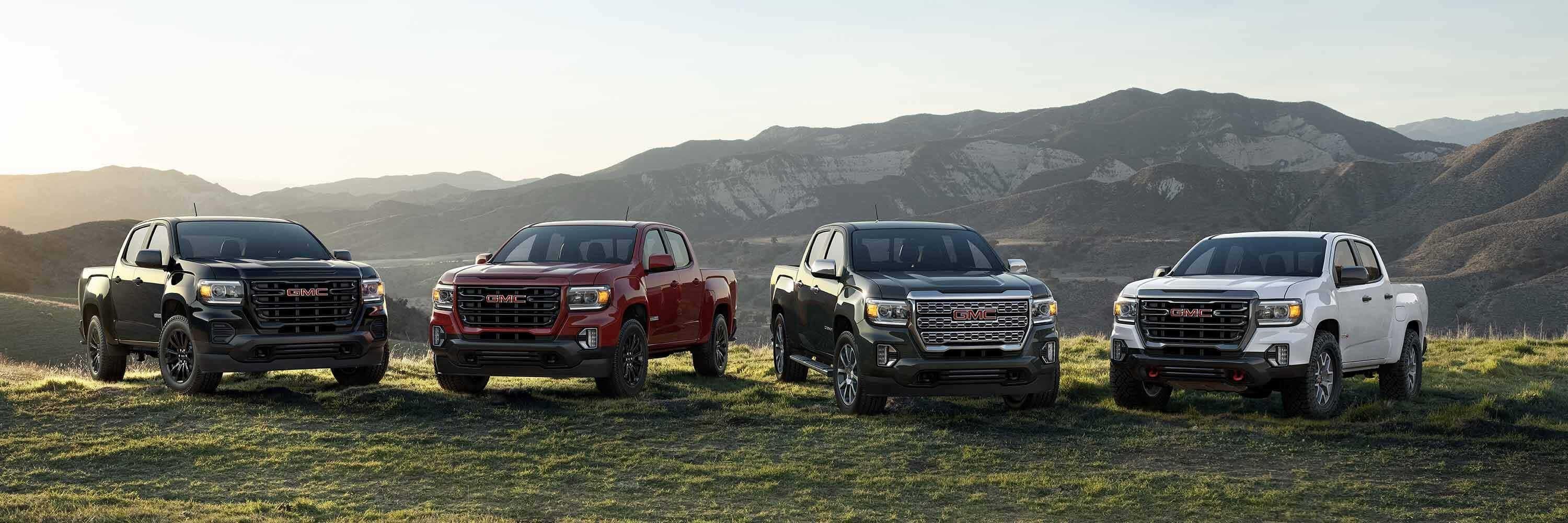6 Things You Should Know about Your Pickup
A pickup is more than just a form of transportation, as you must count on it for both big and small jobs. Is your vehicle up to the task? It’s important to know what your truck’s limits are, in which case the following information will prove very helpful.

Engine Size
There’s a wide array of truck engines out there, ranging from 4 or 6-cylinder motors to turbocharged diesels. The bigger your engine, the greater your towing and hauling capacity will be. This is especially true with diesel motors, which produce more torque and are therefore ideal for towing.
While larger engines are better for towing, they will consume quite a bit more gas. So you’ll want a motor that can handle your towing needs, yet provide you with the best possible fuel economy.
Rear Wheel, All-Wheel, or Four-Wheel Drive
Although these terms are often used interchangeably, they are not all the same thing. Each one has its own unique characteristics and advantages. Here’s a quick look at the different types:
• Rear-wheel drive-Uses the back wheels for acceleration and the front two wheels for steering. Accordingly, you will notice more power and better acceleration but may have more trouble driving on slick roads.
• All-wheel drive-Power is fed to each wheel individually, helping you grip the road better whenever it’s slippery or wet. It’s very useful in mud or sand but may not work well in extreme off-road conditions.
• Four-wheel drive-Typically has a low and high-gear transfer case that can be adjusted to use when climbing or driving off-road. Four-wheel drive vehicles can handle very rugged terrain, but also consume more fuel even under normal driving conditions.
Axle Ratio
The axle ratio refers to the number of gears inside the pickup’s differential. The axle is linked to your driveshaft and turns a certain number of times during each wheel rotation. Accordingly, the axle ratio is typically expressed as a ratio- for example, 3:55. As with the engine, a higher axle ratio will provide you with greater towing abilities, while significantly decreasing your gas mileage.
Towing Capacity
Most trucks have a sticker inside the front door that lists the towing capacity. However, you should remember that this number is the maximum amount your vehicle can tow when empty. Consequently, the weight of passengers and other cargo will decrease your towing capabilities. Other things that can affect how much you are able to tow include:
• The type of hitch you have
• Whether or not you have an additional towing package
• Road conditions (snow, ice, broken pavement, etc.)
• Type of terrain (your towing abilities may decrease if you are mainly traveling uphill)
Cab Details
How many people can your cab seat comfortably? How much head and legroom will back passengers have? These are important things to know if you will be hauling people to and from a job site or plan to use your truck for running errands with the family.
The doors of your cab matter as well. Some cabs have only two doors, while others are equipped with “suicide doors” that will only open if the front two are opened. These doors provide safety for children; however, they could make it more difficult for adults to get in and out of the backseat.
Long or Short Bed
The length of your bed will determine the amount and type of cargo you may haul. Truck beds typically run anywhere from 5 to 6.5 feet, with longer beds mostly being found on medium or heavy-duty pickups.
When buying a brand new truck, you can normally come up with your own truck bed and cab configuration. Even so, remember that an extended bed along with a super cab will make your vehicle very long and therefore difficult to park.
Have Questions about Your Pickup? Leachman Buick GMC has Answers
These are just a few basic things you should know about your truck, but there are also plenty of others. For example, you may have questions about your maintenance schedule or extended warranty. Fortunately, these are all things we can help you with as well. If you have questions about your current pickup or are ready for a new one and
need help with your selection, we invite you to come and see us.
There’s a wide array of truck engines out there, ranging from 4 or 6-cylinder motors to turbocharged diesels. The bigger your engine, the greater your towing and hauling capacity will be. This is especially true with diesel motors, which produce more torque and are therefore ideal for towing.
While larger engines are better for towing, they will consume quite a bit more gas. So you’ll want a motor that can handle your towing needs, yet provide you with the best possible fuel economy.
Rear Wheel, All-Wheel, or Four-Wheel Drive
Although these terms are often used interchangeably, they are not all the same thing. Each one has its own unique characteristics and advantages. Here’s a quick look at the different types:
• Rear-wheel drive-Uses the back wheels for acceleration and the front two wheels for steering. Accordingly, you will notice more power and better acceleration but may have more trouble driving on slick roads.
• All-wheel drive-Power is fed to each wheel individually, helping you grip the road better whenever it’s slippery or wet. It’s very useful in mud or sand but may not work well in extreme off-road conditions.
• Four-wheel drive-Typically has a low and high-gear transfer case that can be adjusted to use when climbing or driving off-road. Four-wheel drive vehicles can handle very rugged terrain, but also consume more fuel even under normal driving conditions.
Axle Ratio
The axle ratio refers to the number of gears inside the pickup’s differential. The axle is linked to your driveshaft and turns a certain number of times during each wheel rotation. Accordingly, the axle ratio is typically expressed as a ratio- for example, 3:55. As with the engine, a higher axle ratio will provide you with greater towing abilities, while significantly decreasing your gas mileage.
Towing Capacity
Most trucks have a sticker inside the front door that lists the towing capacity. However, you should remember that this number is the maximum amount your vehicle can tow when empty. Consequently, the weight of passengers and other cargo will decrease your towing capabilities. Other things that can affect how much you are able to tow include:
• The type of hitch you have
• Whether or not you have an additional towing package
• Road conditions (snow, ice, broken pavement, etc.)
• Type of terrain (your towing abilities may decrease if you are mainly traveling uphill)
Cab Details
How many people can your cab seat comfortably? How much head and legroom will back passengers have? These are important things to know if you will be hauling people to and from a job site or plan to use your truck for running errands with the family.
The doors of your cab matter as well. Some cabs have only two doors, while others are equipped with “suicide doors” that will only open if the front two are opened. These doors provide safety for children; however, they could make it more difficult for adults to get in and out of the backseat.
Long or Short Bed
The length of your bed will determine the amount and type of cargo you may haul. Truck beds typically run anywhere from 5 to 6.5 feet, with longer beds mostly being found on medium or heavy-duty pickups.
When buying a brand new truck, you can normally come up with your own truck bed and cab configuration. Even so, remember that an extended bed along with a super cab will make your vehicle very long and therefore difficult to park.
Have Questions about Your Pickup? Leachman Buick GMC has Answers
These are just a few basic things you should know about your truck, but there are also plenty of others. For example, you may have questions about your maintenance schedule or extended warranty. Fortunately, these are all things we can help you with as well. If you have questions about your current pickup or are ready for a new one and
need help with your selection, we invite you to come and see us.








